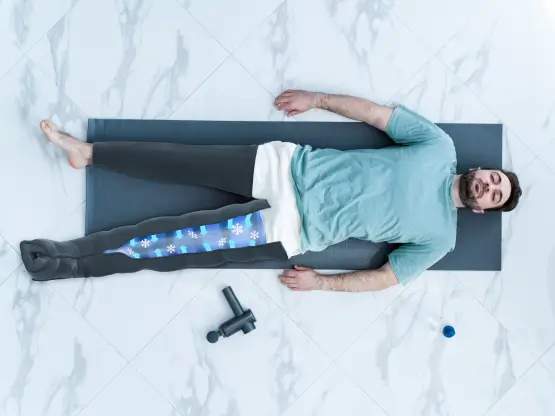If you are an athlete, a runner, or simply someone who lives an active life, you know the frustration of Delayed Onset Muscle Soreness (DOMS). That deep ache that sets in 24 to 48 hours after a tough workout can derail your training plan and reduce your performance.
While rest and heat are essential, the single most powerful tool for accelerating your recovery is Cold Therapy (Cryotherapy).
It’s not just a quick fix; it’s a science-backed method for optimizing your body’s healing process. Here is a deep dive into why cold therapy should be a non-negotiable part of your routine.
1. The Science of the “Cold Plunge”: Controlling Inflammation
When you put stress on your muscles through exercise, you create micro-tears in the muscle fibers. This leads to swelling and acute inflammation—which is the root cause of soreness and stiffness.
Cold therapy works through a process called vasoconstriction:
- Restricts Blood Vessels: When applied, cold causes the blood vessels in the affected area to narrow. This reduces blood flow, which in turn drastically limits the inflammatory response and subsequent swelling.
- The Flush: Once the cold is removed, the blood vessels quickly dilate (vasodilation). This rush of fresh, oxygenated blood floods the area, efficiently clearing out metabolic waste products (like lactic acid) that contribute to muscle fatigue. This “pumping” action accelerates the healing process.
2. Direct Benefits for Active Individuals
For anyone pushing their physical limits, the benefits of controlled cold application are immense:
- Immediate Pain Relief: Cold therapy temporarily numbs nerve endings in the muscle, providing immediate and significant relief from soreness and muscle spasms.
- Reduced DOMS: By mitigating inflammation early, cold compression substantially reduces the severity and duration of Delayed Onset Muscle Soreness.
- Faster Return to Training: Less pain and inflammation mean you can resume your normal training regimen sooner, maintaining consistency and progress.
- Injury Management: For acute strains or sprains, cold is the fundamental first line of defense (following the R.I.C.E. protocol) to control swelling around damaged tissue.
3. Beyond Ice Packs: The Advantage of Cold Compression
Standard ice packs are messy, inconsistent, and lack the precise pressure needed to effectively reduce swelling. This is where advanced tools like the Ultra Recovery Cryo Uno attachment are essential.
By combining consistent, targeted cold application with powerful pneumatic compression (like that in your recovery boots), you achieve superior results:
- Targeted Cold: The cold source stays tightly wrapped around the injury/muscle, ensuring maximum temperature efficiency.
- Even Pressure: The compression actively prevents swelling and pushes fluid buildup away from the injury site, an effect ice alone cannot achieve.
- Simplicity: No dripping ice bags, no mess, just clean, effective relief tailored to your recovery needs.
4. Optimal Use: When to Go Cold
The best time to use cold therapy is immediately following an intense workout or when an injury first occurs.
| Application Time | Duration | Primary Goal |
| Post-Workout (General Soreness) | 10 – 20 minutes | Reduce acute inflammation and prevent DOMS. |
| Acute Injury (Sprain/Strain) | 10 minutes (repeated every 2 hours) | Control swelling and provide immediate pain relief. |
| Chronic Pain/Stiffness | 10 – 15 minutes | Reduce localized inflammation and improve mobility. |
Take Charge of Your Recovery
You’ve invested in the best compression technology; now, complete your recovery arsenal. Integrating targeted cold compression is the most effective way to eliminate downtime and ensure you’re always performing at your best.
Discover the power of combined compression and cold. Explore the Ultra Recovery Cryo Uno attachment today.
Disclaimer
This article is for informational purposes only. The information provided is not a substitute for professional medical advice, diagnosis, or treatment. Always seek the advice of your physician or a qualified health provider with any questions you may have regarding a medical condition.


0 Comments